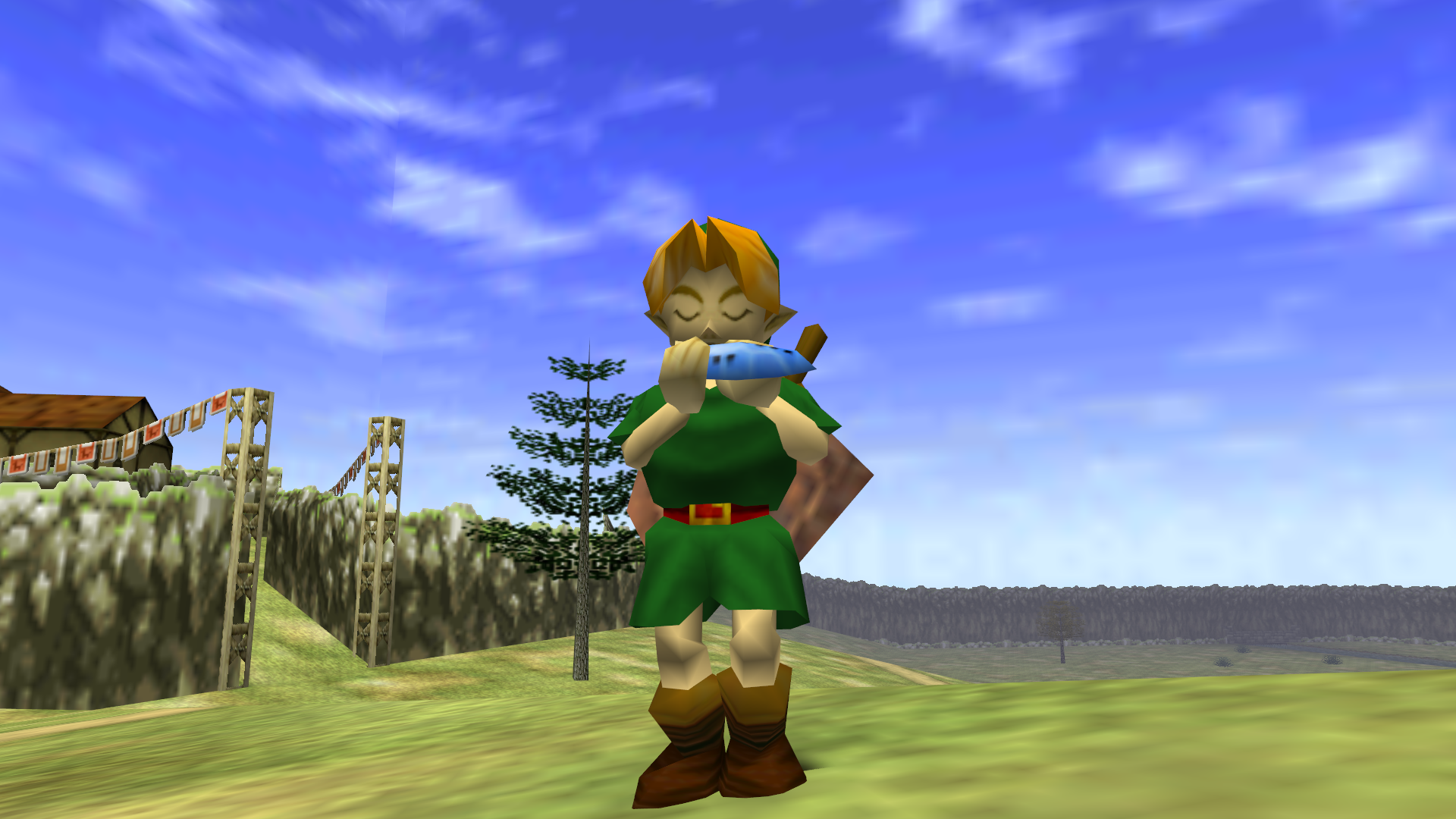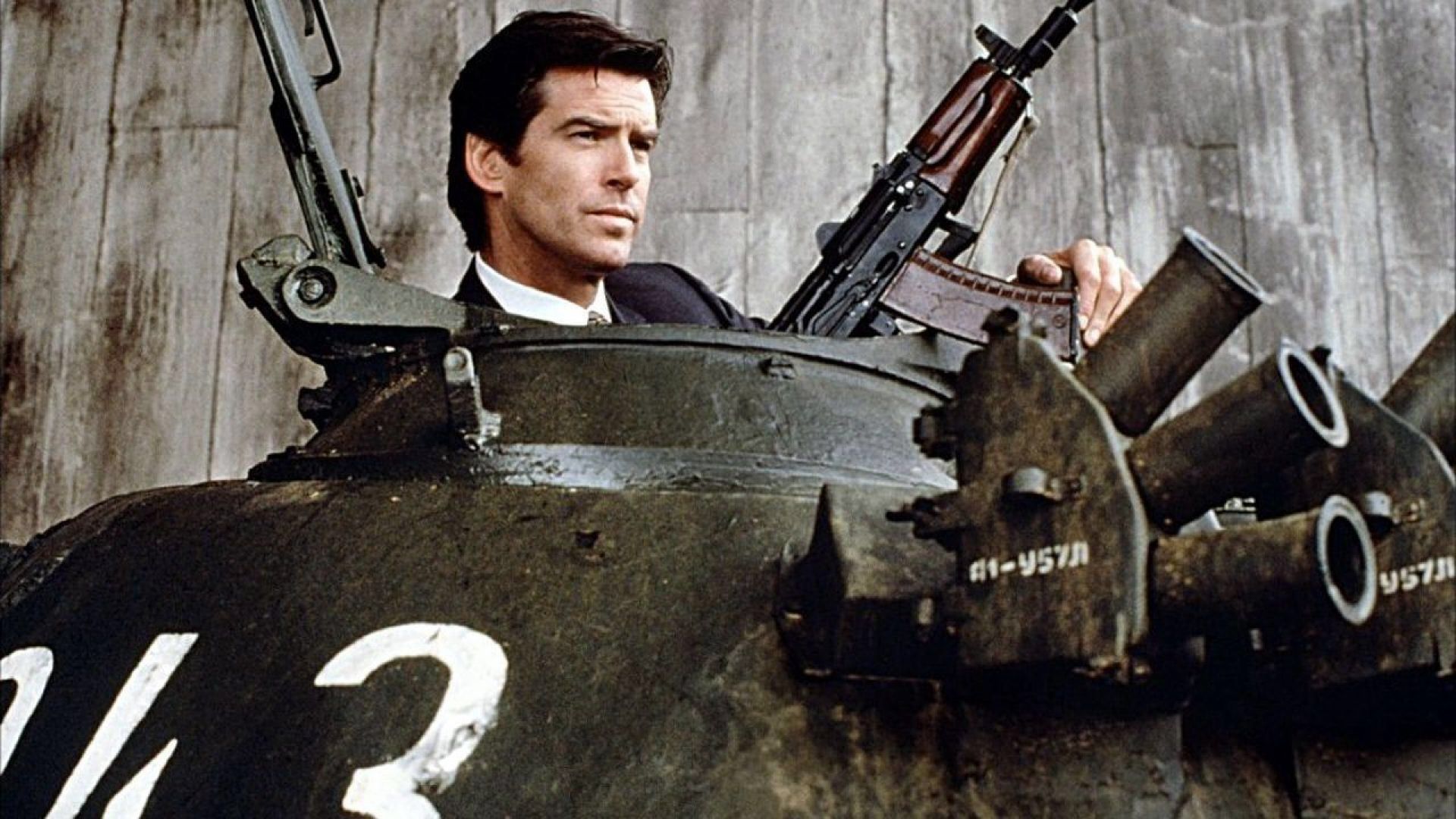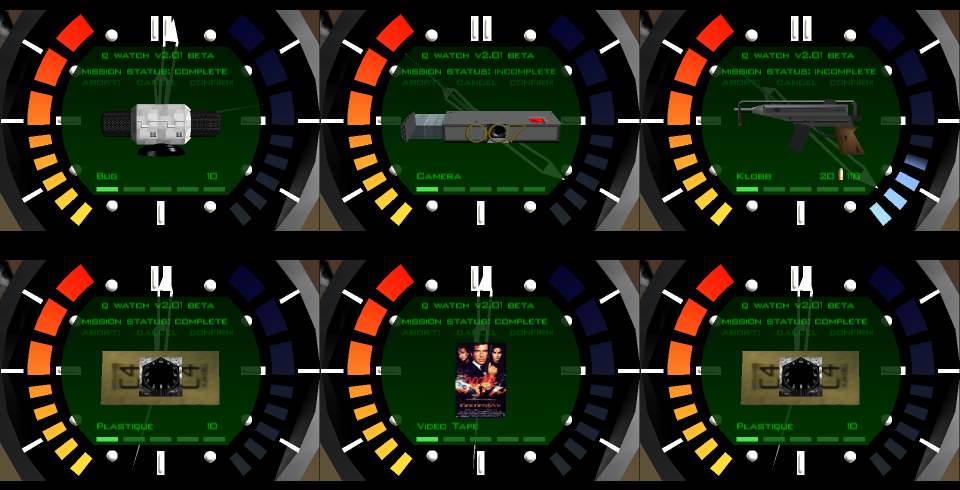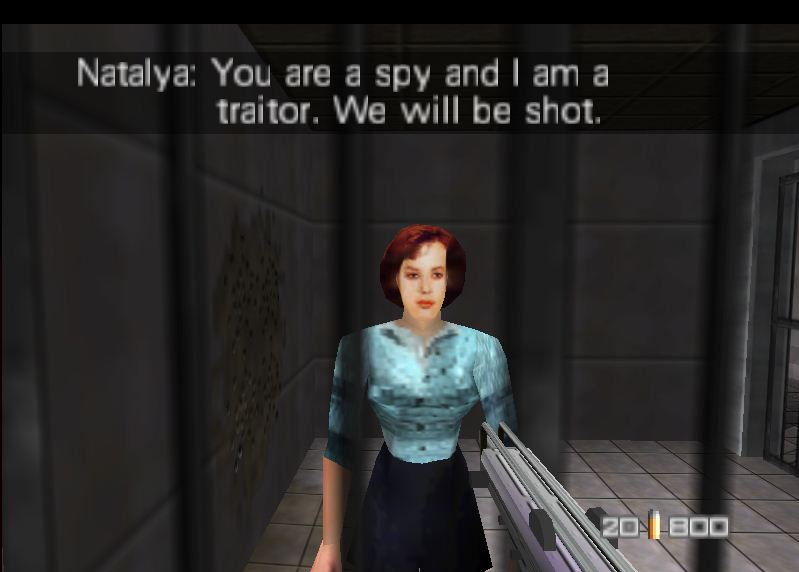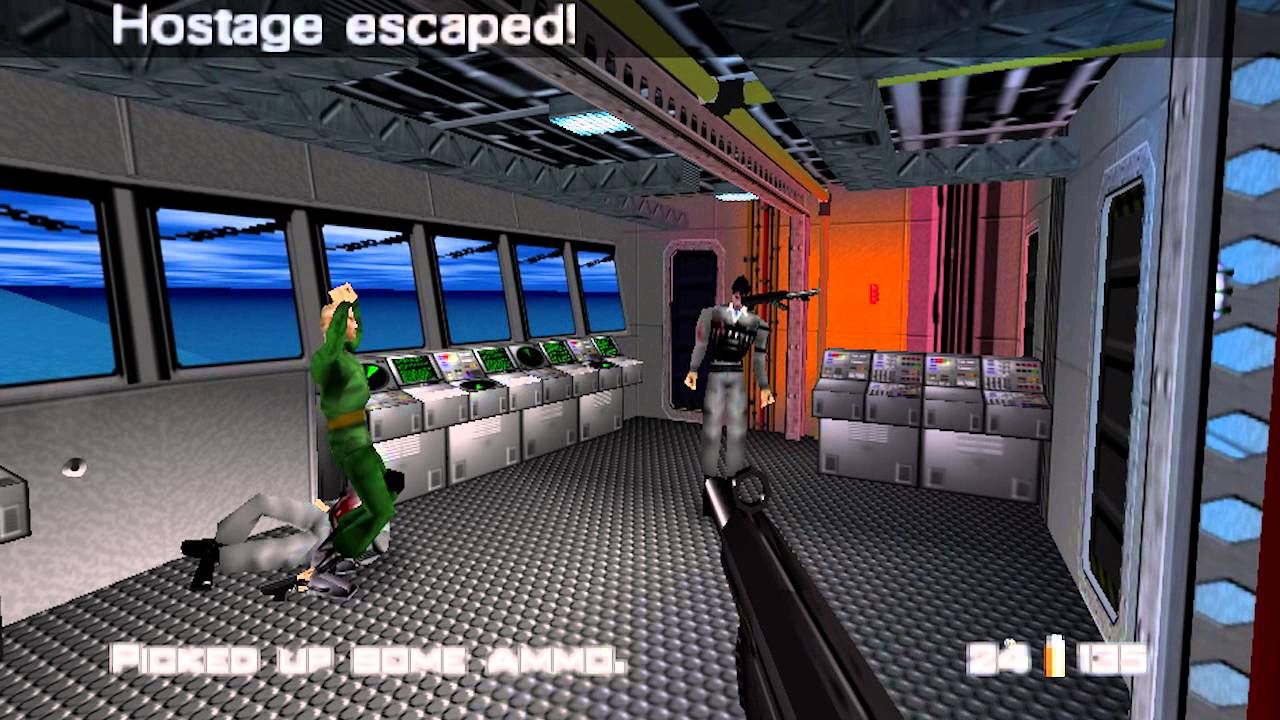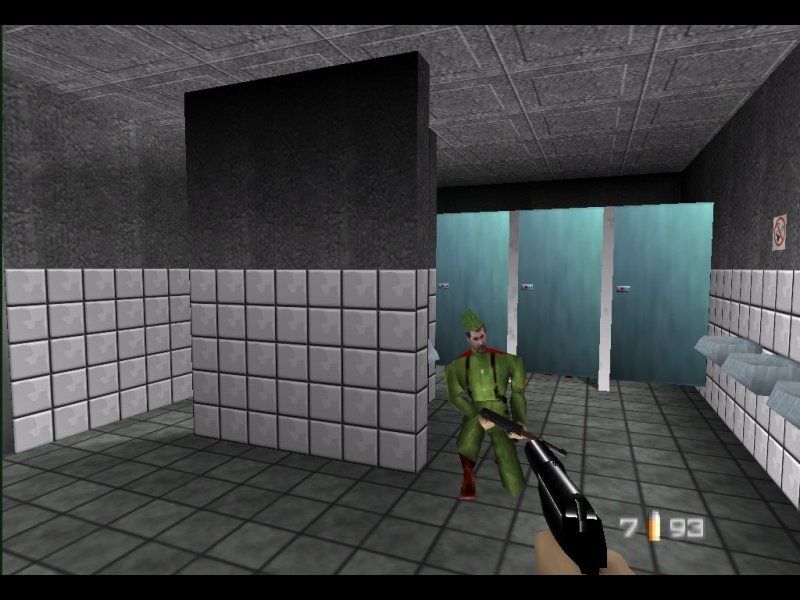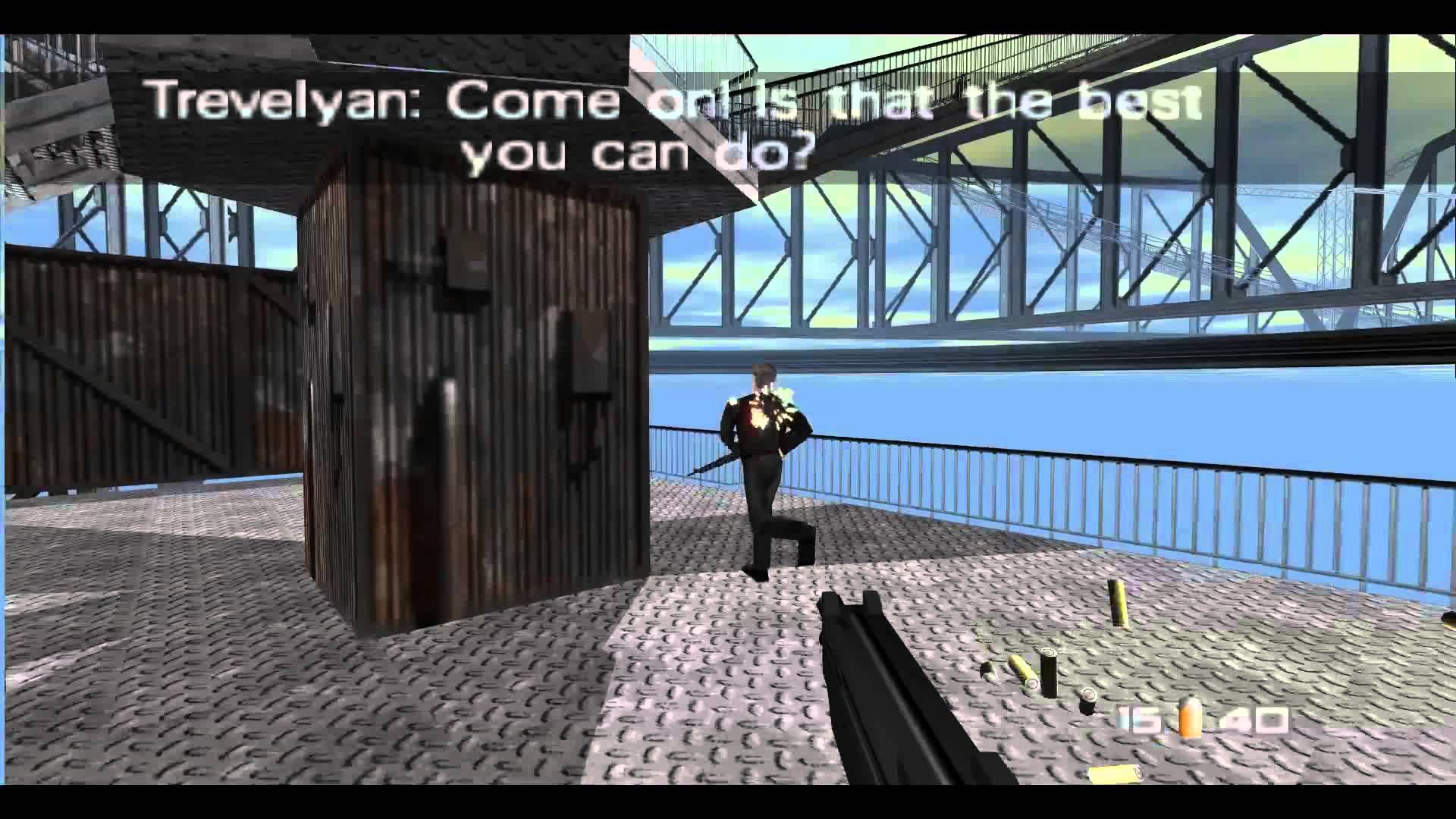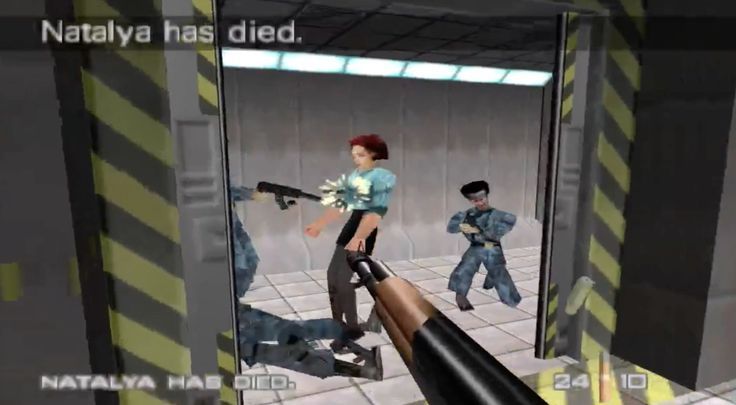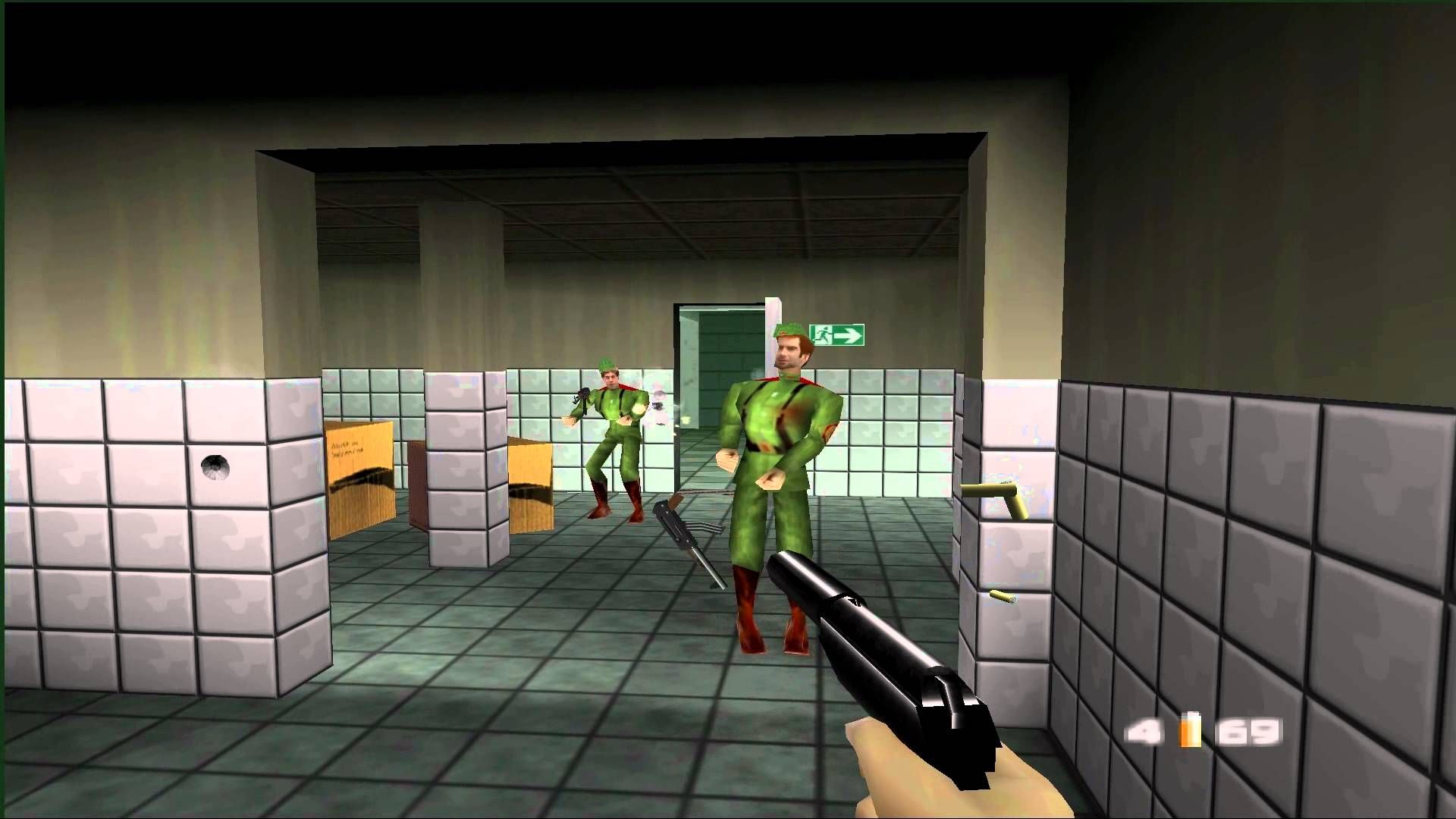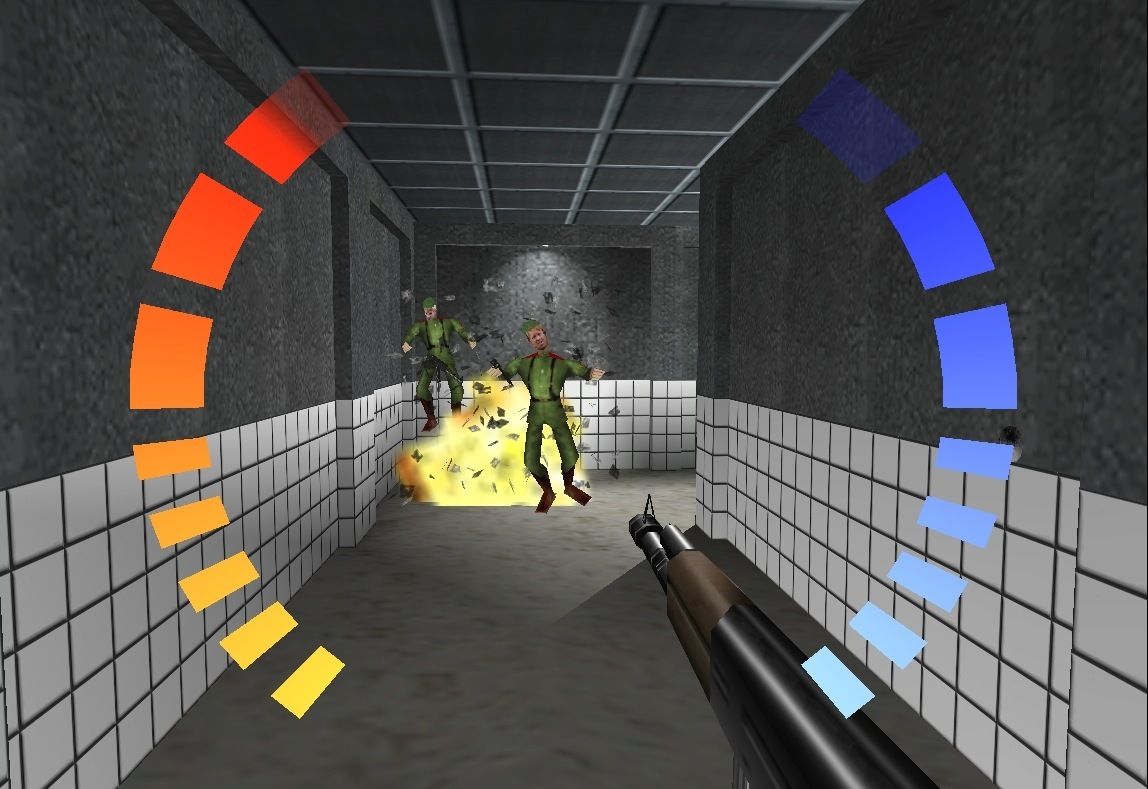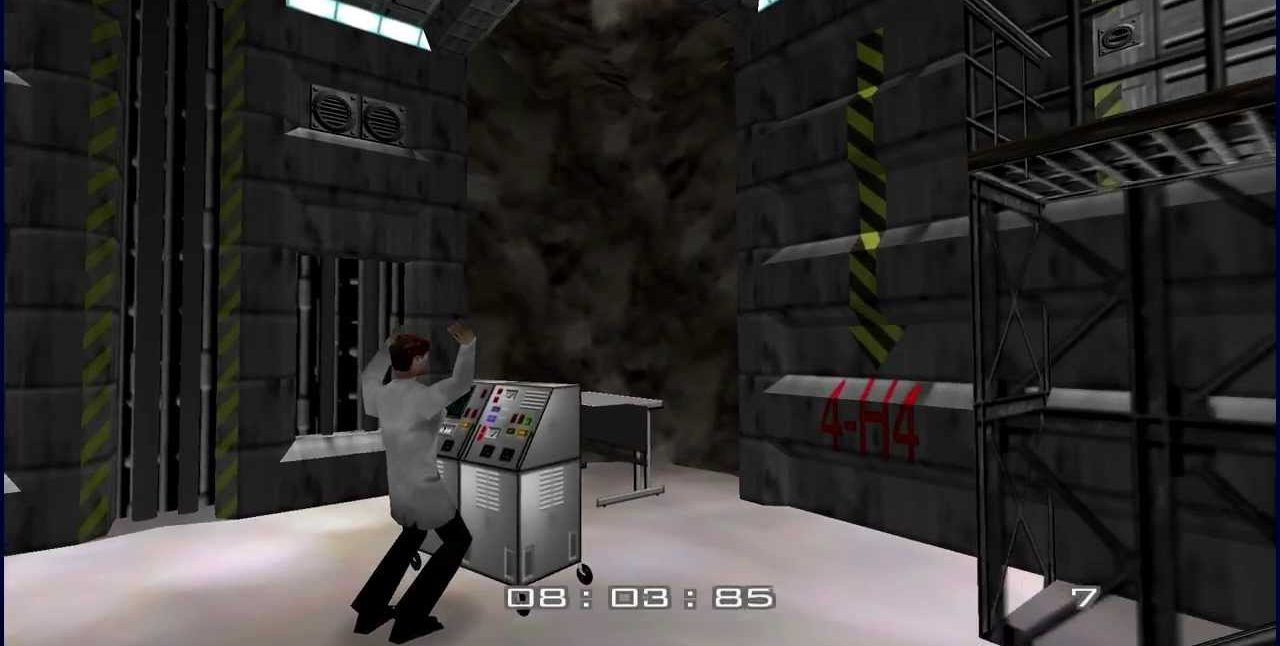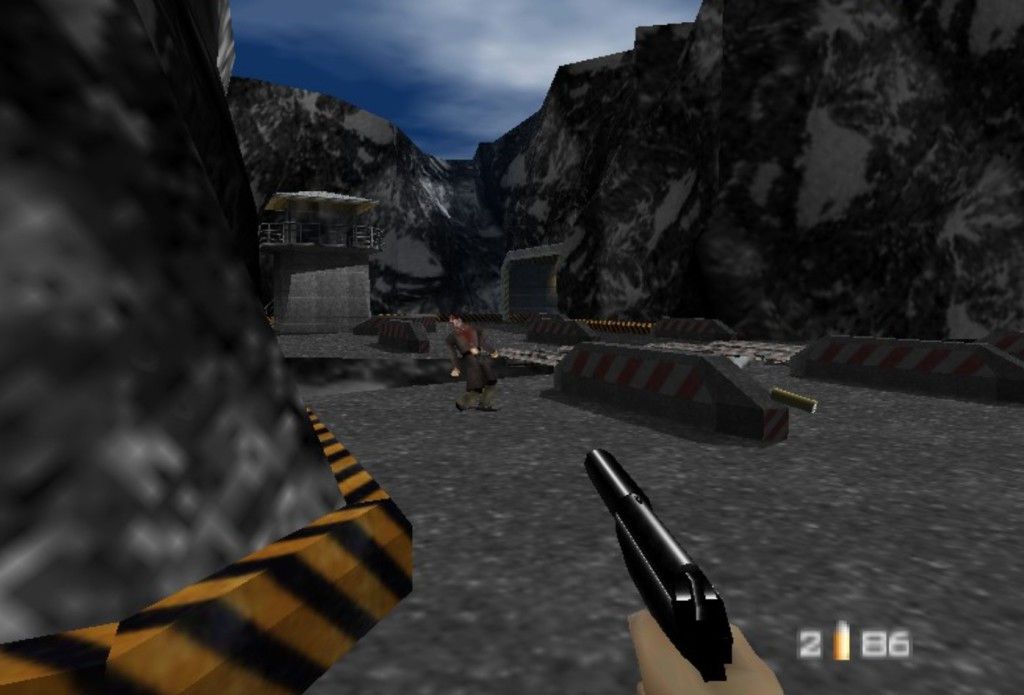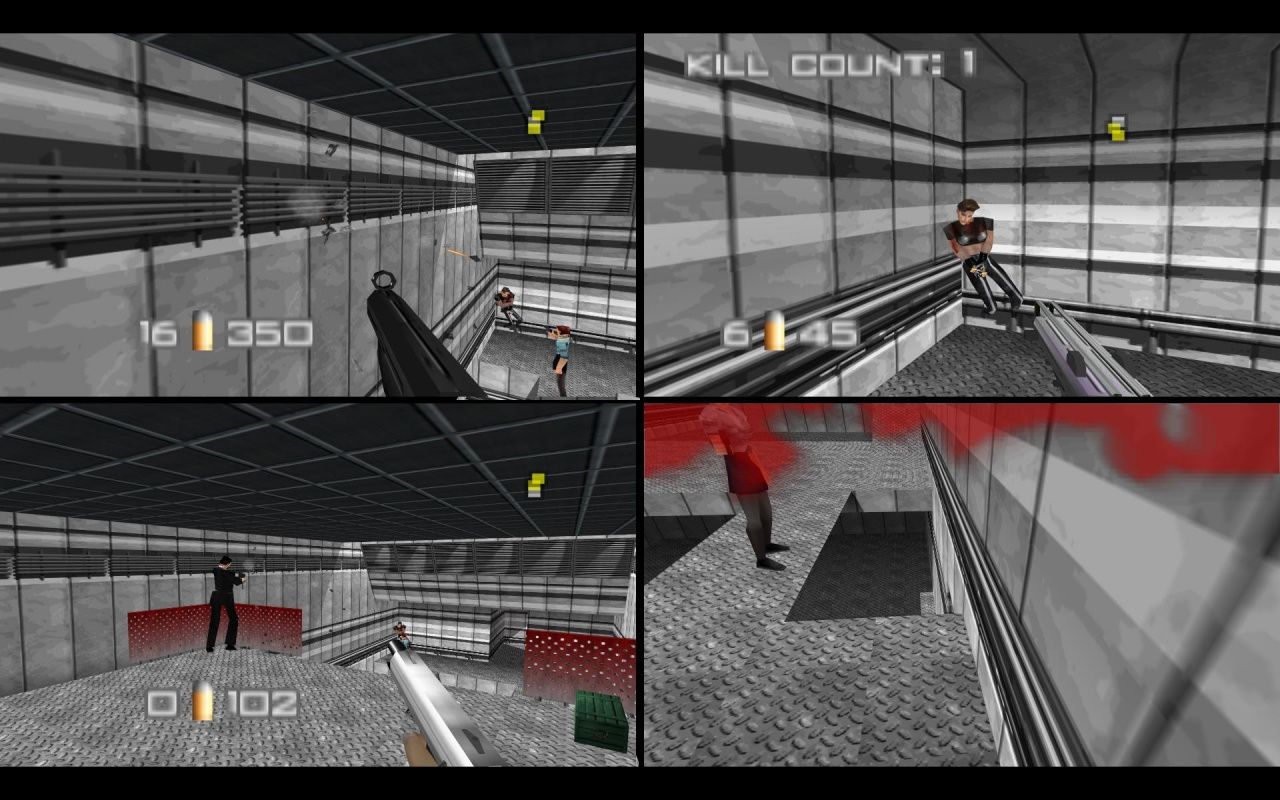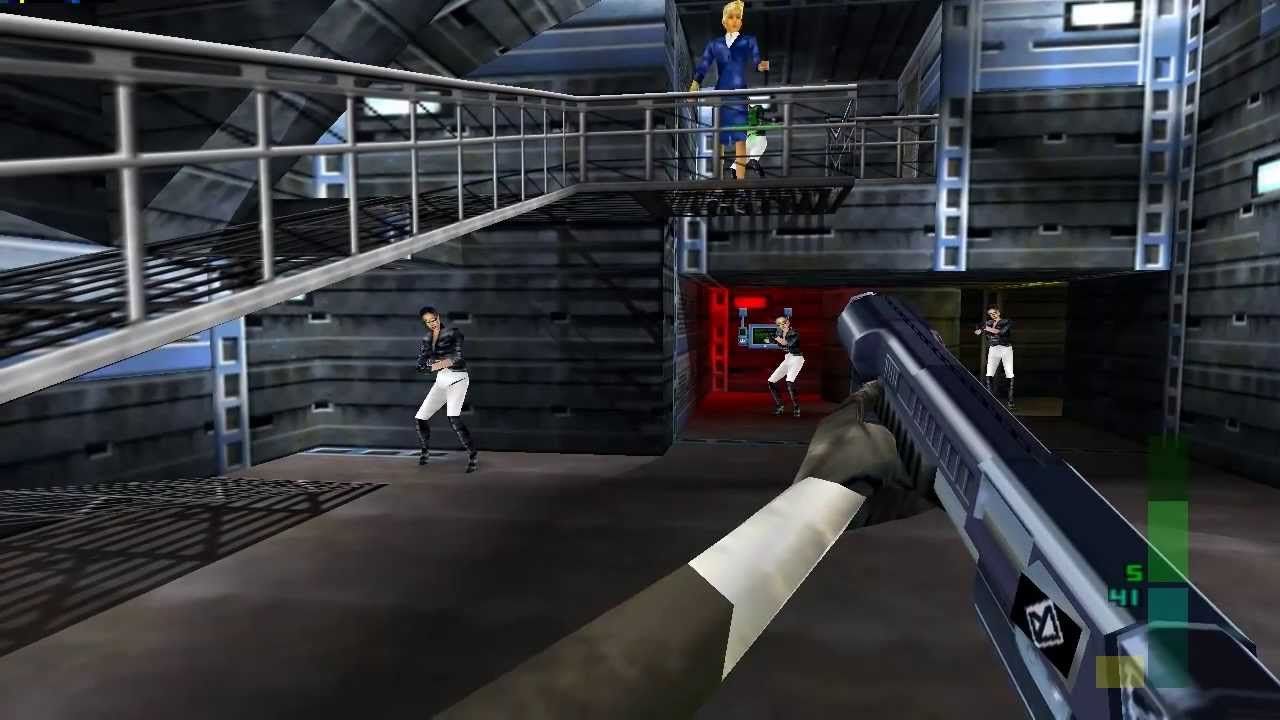Great things are remembered because they were great and never stopped being great. Maybe they never will stop being great. But some things are remembered because they were just good enough in a time where very little was good at all and good enough then is not good enough now.
Rare used to be one of the greatest game developers on the planet, giving us such titles as the whimsical Banjo-Kazooie, the vulgar Conker's Bad Fur Day, the hilariously broken but greatly fun Donkey Kong, the supposedly only second-best shooter of all time Perfect Dark... And one of the crown jewels of the Nintendo 64: GoldenEye 007.
Goldeneye did a lot right, which is even more impressive given its status as a launch title for the N64 back in 1997. It was one of the first first-person shooters with decent movement and gunplay. It could have a lot of enemies on the map at one time, with different AI routines and animations playing. It had a combination of tight corridors and wide open fields and hangars. It had a radical multiplayer mode that most players remember fondly. It even had stealth mechanics and functional silenced weapons.
But being the first to do these things does not make it the best. If we only loved the first of anything, we'd still be driving around in coal-fired buggies instead of fawning over Italian supercars. We'd be sending smoke signals instead of taking telephone calls on wristwatches. Let's be a little realistic and consider if GoldenEye actually holds up as well today as it did 20 years ago.
15 1997 Is Like, So Last Year
Simply put, GoldenEye was an amazing game for the time. 3d games were new and it is one of the early 3d games that works, both in technical terms and in just being actually enjoyable.
But things progressed very quickly in the late 90s. Only one year later, on the same console, we saw The Legend of Zelda: Ocarina of Time, which had even wider open spaces, more complex programming and scripting, and even had better performance and a more stable framerate. Given just a few more months, the Expansion Pak was released, allowing even better visuals and higher performance for games like Donkey Kong 64 and The Legend of Zelda: Majora's Mask. By the time The World is Not Enough came out, one of the last games on the N64, the console was being pushed so hard that its graphics could compete with some lower-budget PS2 games. And all the while, gameplay and controls were being refined and streamlined towards what we see in shooters today.
GoldenEye doesn't have to compete with modern games. That'd just be unfair. But from its own console generation, even its own console, competition became very stiff very quickly.
14 It Doesn't Really Follow the Movie
In the GoldenEye game, many of the levels are based on locations in the film, but lengthened so that there can be some actual gameplay or have lengthy conversations and dramatic setpieces cut out to make room for more running and gunning. But some details are changed for seemingly no reason, when they would have made for decent enough gameplay. Dimitri Mishkin, instead of being shot fatally by General Ourumov after interrogating Bond, simply lets Bond go and the general never appears in the level at all. Valentin Zukovsky, a fairly important character and personal friend of Bond, only appears a couple of times and doesn't have much to say. While none of these changes make the game bad on their own, it's a bizarre decision that they were made at all.
Whole new plot points and setpieces were added as well: The events of Silo are wholly new and no place like it appears in the movie. The Caverns similarly never appeared in the film, as Bond goes straight from the jungles of Cuba to the GoldenEye transmission station. Which, unlike its portrayal in the level Cradle, isn't suspended high in the sky with nothing below it.
And most unforgivably, the titular GoldenEye never makes a visible appearance in the game even once! It is mentioned in passing in the mission briefings, but that's it.
13 There's Too Much Menu Time
One of the cardinal sins of game design is implementing mechanics that take you out of the game. GoldenEye did a pretty good job of maintaining pace except for a couple of critical errors. One of these errors was making you pause the game and go through a slow-moving menu to access your gadgets.
Later Rare shooters added button combinations to access any special gear you needed for a mission, but don't want to cycle through with your guns; things like hacking kits, bombs to plant, and random macguffins you pick up. But GoldenEye didn't have that. Every time you wanted to complete an objective involving an item, you'd have to have Bond slowly bring up his watch --a sequence where you can still get shot and take damage for several helpless seconds-- and slowly scroll through your inventory until you find the gadget you need.
12 There's Too Much Talking
The second critical error GoldenEye made in keeping the player immersed was having you talk with NPCs way too often and for way too long, but all in total silence.
In a few missions, most notably Facility, Bunker 1 & 2, and Statue, there are NPCs that you have to talk to to advance the level. The most egregious example of this is in Statue, which contains the big reveal that Bond's old buddy, Alec Trevelyan, is the Russian super-terrorist Janus and also something about a helicopter they stole, though they don't really say much worth listening to. They kinda leave out all the important details. But to get to that sequence, you have to talk to Valentin to be told where Mr. Janus is meeting you. And then after all of that, you have to fetch Natalya, who has more words for you and then can get shot by a roaming guard and fail you the mission. And for all that talking, they never actually explain the important plot point of "It was us who stole the helicopter!"
But the sequence comes in the middle of a fairly difficult level and takes about a minute per conversation. Who wants to talk in a shooting game? That stuff should go at the beginning and end of a level and be skippable, not slot it in in the middle of missions while you're busy getting shot at.
The worst part is that these lines aren't even voiced! It's all just lingering text, with no way to advance it once you've read it -- nor to delay it if you're a slower reader. Accessibility, anyone?
11 It's Random Whether You Succeed or Fail
Even in the Speedrunning community for this game, even the best strategies are considered to be inconsistent and the key to getting a record on a particular level comes down to the guards picking good animations to use to fire, friendly NPCs pathing correctly instead of deciding to stop and shoot the roses, and the game's auto-aim either selecting good targets or, preferably, failing entirely and letting you own your aim gun for once.
Additionally, a lot of the levels rely on random elements. The Statue stage has an objective that can spawn in one of five random locations. The Frigate's hostages take randomized routes out of the ship. Streets involves guards that randomly spawn with rockets instead of rifles. All the guards' animations for firing at Bond are random, which means they can take a random amount of time and have random accuracy. A lot of the hardest segments of the game to complete are only so because a bad RNG roll can spell disaster for reasons entirely outside of your control.
Even the traitorous Alec Trevelyan runs at a randomized speed from the start of the Cradle and Caves levels, which affects door cycles, which affects guards, which affects... Well, the whole level.
10 The Level Design Is Awful
GoldenEye is a product of its time. First-person shooters, realistic or otherwise, had mostly followed the success of Doom and its key-based labyrinthine level design. GoldenEye is no exception. While it was drawing on a movie as its source material and the movie had sensible locations, the temptation to have large sprawling levels with tons of corridors and open foggy fields was too great for Rare to resist. Big maps are usually good maps, but Rare forgot the important step of making their big maps actually traversable, with distinct areas so that you can make heads or tails of the layout. The early game is mostly linear, but once you get to stages like Frigate or Bunker, they become mazes connected by open fields that are larger than the draw distance.
If you don't believe me, try to get through Caverns in one go without looking up a guide. Despite it supposedly being a chase sequence, there's tons of side paths and extra objectives to complete, with little to no indication of where to go.
9 The Movement is Too Simple
A lot of the greatest shooters are remembered for their mobility. Doom lets you run absurdly fast and glide between platforms with enough speed. Tribes had skiing and Quake had strafejumping. Basically everything let you jump higher by shooting yourself in the foot with a bazooka. Shooters were fast. It's just how it worked in the 90s.
But GoldenEye was different. It's pretty slow, keeps the player character grounded, and suffers from some strange quirks. Bond has to build up speed rather slowly until running at full tilt. Many ledges don't let Bond jump off of them, limiting your vertical mobility unduly. Boosting yourself around with explosives is generally a bad idea because of the sheer damage they'd do. It's a departure from the norm which hurts the gameplay a bit. It's not that it's different and that different is bad; different is usually good. But GoldenEye left out the normal trappings of FPS movement but didn't put anything back in their place.
8 The Difficulty Curve is All Over the Place
Many players have "fond" memories of levels like Silo and Control that, for whatever reason, intensely ramp up the difficulty to ludicrous levels. In fact, the level Silo is so packed with enemies, explosive objects, and easily-failed objectives that the only way to complete it without dying on higher difficulties is to go as fast as possible so that groups of enemies don't even spawn.
Meanwhile, there are late game levels like Streets and Train that are just straight runs to the end, with the only difficulty coming from the possibility of a guard spawning with some ridiculous power weapon instead of their usual rifles and submachine guns. Did you know that Streets can be completed in only one minute and eleven seconds? It's supposed to take around five, if the time limit is any indication.
7 "Natalya Has Died"
Natalya, Natalya, Natalya. One of the less action-oriented of the Bond Girls over the years of films and games. On top of that, her appearance in the GoldenEye game has the unfortunate quirk of having AI written in the 90s, so she spends a lot of time dying.
The best showcase of this is the level Control where you have to protect Natalya for about a minute and a half while she stands completely stationary at a console to hack the GoldenEye satellite to change its orbit.
Natalya isn't the only NPC that likes to fail missions for you. Both Valentin and Boris have things to do that they sometimes choose to ignore in favor of getting shot repeatedly by their friends.
6 The Gunplay is Dull
Let's face it: the N64 controller was awful.
So naturally, developers making games that had to use it found clever work-arounds for the stick's short throw, the mushy springs under the face buttons, and the enormous dead zones. Rare chose to make their shooters have auto-aim to compensate for the inability to aim precisely with an N64 controller.
While it's an adequate solution to a serious problem, it makes for rather boring gameplay. You don't really have to aim in GoldenEye; just charge at an enemy, mash the trigger, and it'll usually work out okay. There's no challenge on the lower difficulties. On the higher difficulties, the difficulty lies in moving about quickly and beelining from one objective to the next, rather than shooting guys and not getting shot yourself.
Even in multiplayer, winning and losing usually came down to knowledge of the maps, coming into fights with superior weaponry, and some body armor. There's not a ton of skill that goes into the game because the gunplay is so basic. Even speedruns are mostly decided by AI exploits and routing rather than execution in firefights.
5 The Framerate is Embarrassing
It is not an exaggeration to say that the game will never, ever reach even 24 FPS and, in multiplayer, it will rarely if ever break 15. These problems are compounded if you have an older cartridge or console, as anyone playing it today would have. Meanwhile, games like StarFox could manage a smooth framerate with better visuals, and F-Zero ran at a solid 60fps with no drops despite having 30 contenders per high speed race and no fog.
There's not much to say about it. Plain and simple, GoldenEye runs terribly for no good reason. There were better looking games with more action on screen that ran better.
4 Higher Difficulties Just Add Busywork
For those who never played past Agent difficulty, GoldenEye's approach to replayability and increased difficulty was novel, but misguided. Instead of cranking up enemy weapon damage and turning off aim assist, it... Oh wait, it did though.
Where in a modern game, adding more trinkets to pick up would be rightfully called padding, in GoldenEye, it was received a lot better. I'm not sure why, since it's still just adding more trinkets to pick up in a level to keep you away from the action. Many of the added objectives revolve around objects in the map that can be destroyed, failing the mission instantly. And usually, it's the enemies who shoot up these consoles, crates, and big spy gadgets. Experienced players often have bad memories of the guards in Silo blowing up consoles, killing scientists, and riddling the satellite with bullets before you can take a selfie with it.
3 The Weapon and Enemy Balance is Terrible
There are a lot of guns in GoldenEye. Like, a super lot. Too many, in fact.
A diverse arsenal is important to any good first-person shooter, but GoldenEye's array of weapons are all functionally the same, but just do different damage. But even in that respect, they mostly take the same amount of time to kill an enemy. In the singleplayer mode, it's even worse since the damage ranges are such that the vast majority of weapons you'll find in a level will generally kill an enemy in about three shots to the body, regardless of what it is. The only exceptions to this are the pea-shooting Klobb, overpowered explosives, and cheat weapons like the Golden Gun, Gold/Silver PP7, and Cougar Magnum.
2 The Multiplayer was Never Good
It is a little known fact that the surprisingly addictive and memorable multiplayer mode of Goldeneye was actually added as an afterthought, fairly late in development. Unsurprisingly for a tacked-on feature, the game options are limited, with only hard-coded weapon lists and a scant few and fairly unbalanced objective gameplay modes. The maps were also very large and open, which is a grand technical feat, but it's not appropriate for a game that will only have two to four players running around. Even the map selection wasn't great; the best and most stylish singleplayer levels like Frigate, Surface and Statue gave way to having three copies of Archives and a few completely original levels were almost completely scrapped and remain totally unfinished, accessible only through hacking.
The gunplay being so dull, the weapons themselves all being so similar, the maps being too large, only a couple of those maps being any good, and the game running at a choppy 5-10 FPS all combine to make for a pretty bad multiplayer experience. There was nothing like it at the time, but "the time" was very short and was a long way back.
Also, Oddjob is in the game. And that's terrible.
1 It's Not Perfect Dark
GoldenEye was a technical marvel, boasting new features, four-player splitscreen, varying lighting, and complex AI.
But Perfect Dark one-upped it in every way.
While it required the Expansion Pak to take full advantage of what the game had to offer, Perfect Dark improved on every single thing that made GoldenEye good. The Auto-Aim was smarter, leading to better gunplay. The animations were more diverse and polished, making the game feel a lot smoother. The weapons were made to all be fairly diverse and few step on each others toes, but then have secondary fire modes that make them even more distinct from one another. The higher resolution textures still look fine even today and it featured modern trappings like voice acting, proper cutscenes, and a customizable multiplayer mode. It even had bots you could command and the ability to swap heads and bodies between characters, with many more player models to go around. It would even save the performance statistics of the players from round to round. It unfortunately kept the variable framerate, but it's significantly smoother at its peaks and harder to make dip in general, while offering a much prettier game.
And yet everyone prefers GoldenEye for some strange reason. Rose-tinted glasses, anyone?


